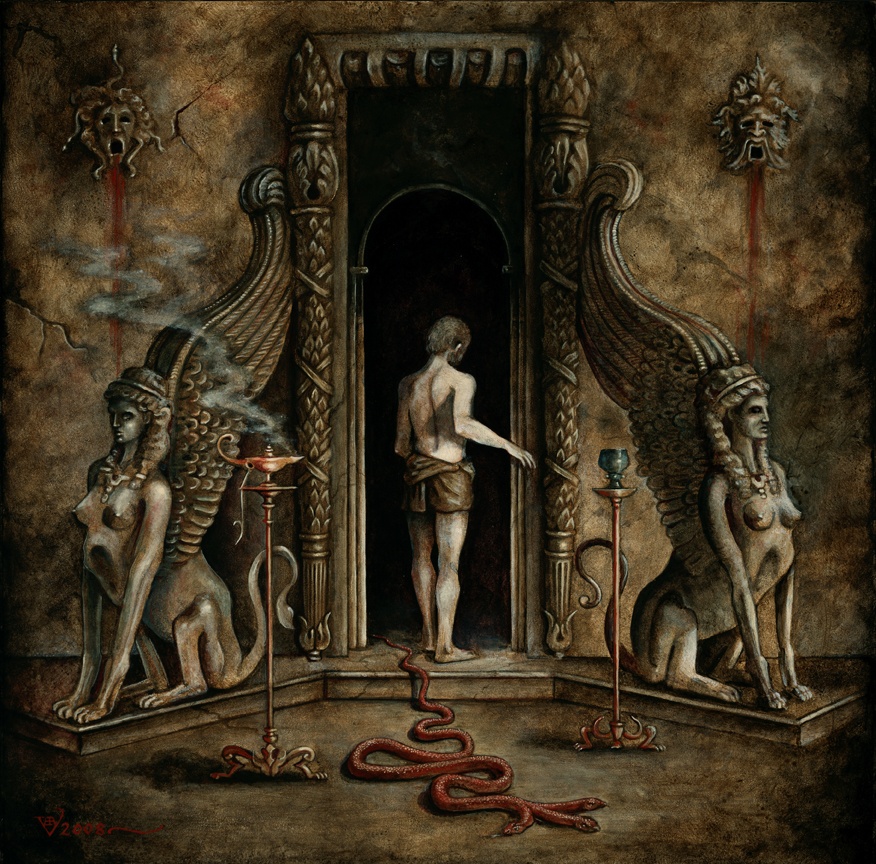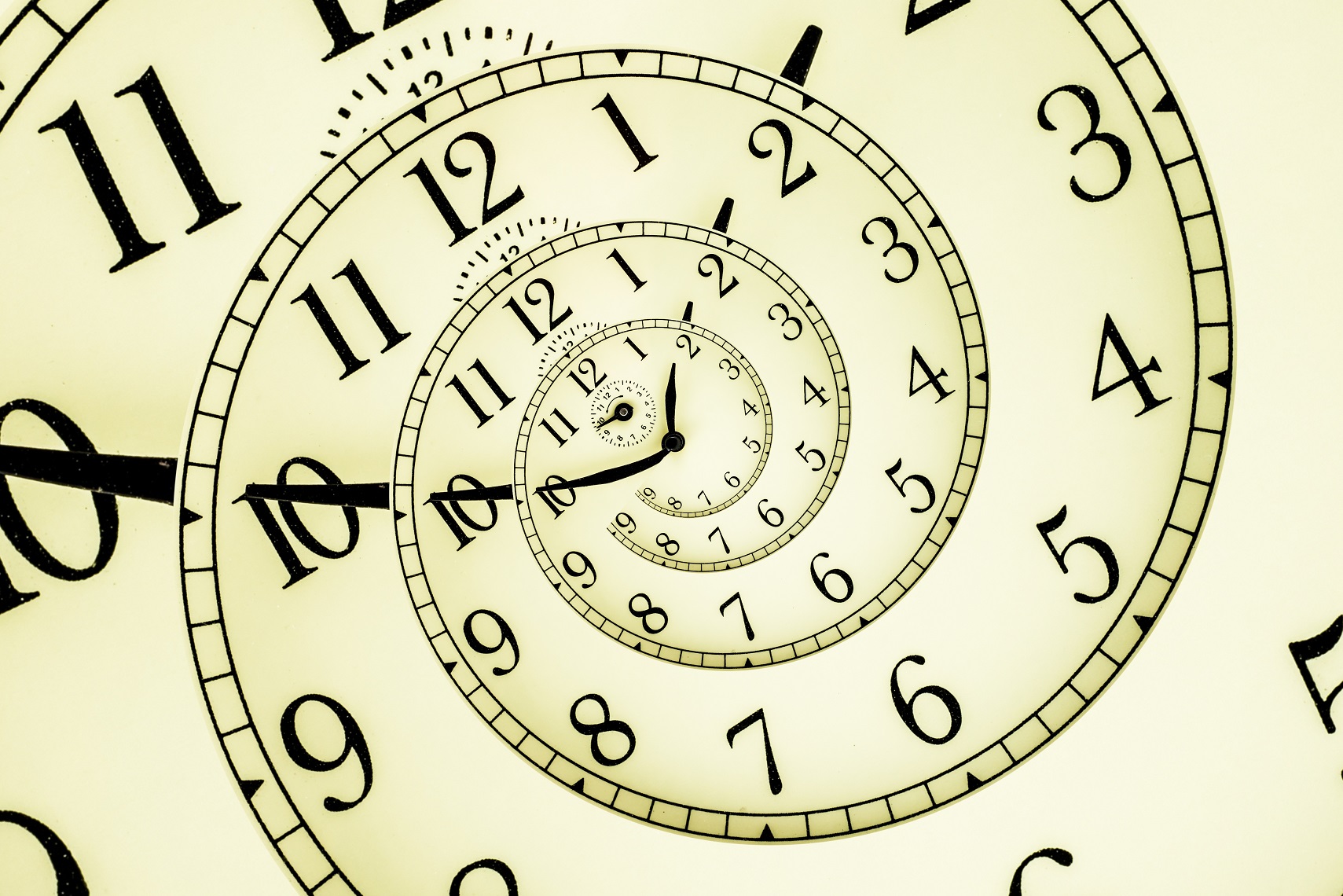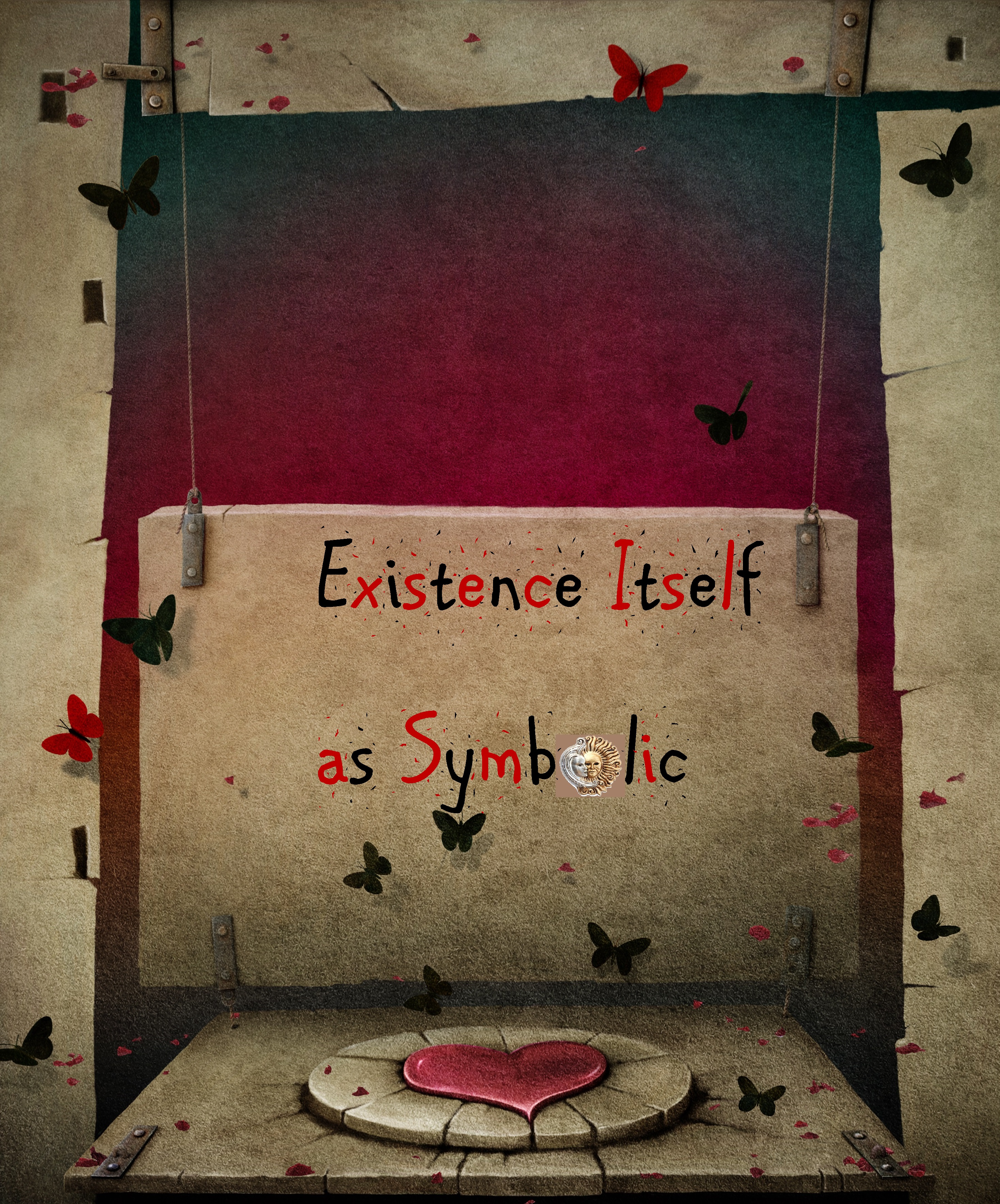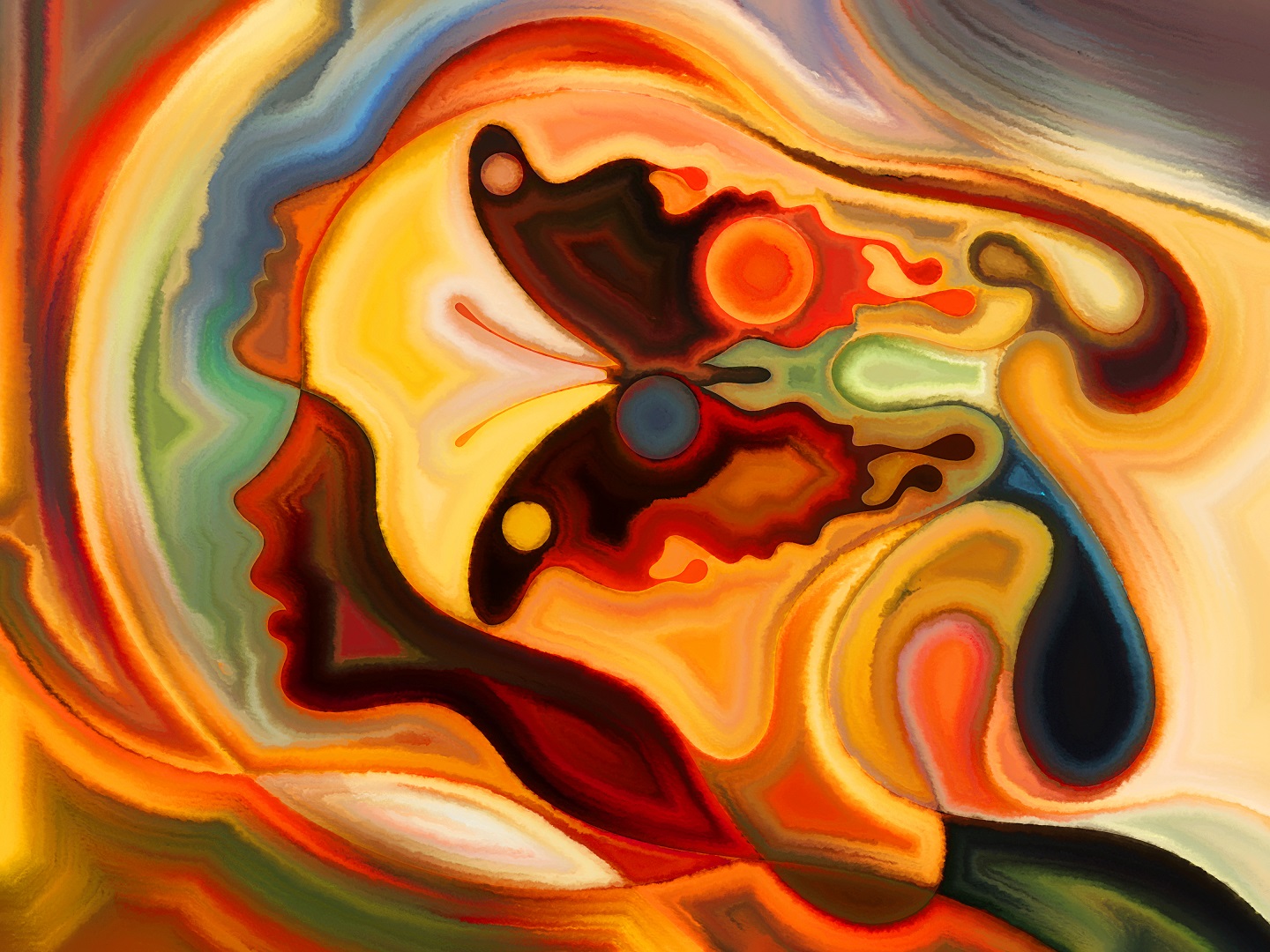
The terrain of ancient Egypt has stirred the imagination of the West for time immemorial, or at least since the time the Greek historian Plutarch (c. 46-120ce) travelled there and transcribed the only surviving written version of the renowned folktale Peri Isidos kai Osiridos which involved the divine brother-sister couple of Osiris and Isis. The ancient Greeks themselves saw Egypt as the origin of religion, esoteric spirituality, and many of their own theoretical suppositions in natural science. This belief later manifested in a more secularized philosophical movement of late antiquity known as Hermeticism under the tutelage of the legendary thrice-greatest Hermes from Hermoupolis Magna. About fifteen centuries afterward the humanistic philosophers of the Renaissance heralded the country as the birthplace of primeval Adamic knowledge that had been lost to humanity during a world flood, a conviction that infused itself into institutionalized streams of esotericism like Freemasonry, the seventeenth century Rosicrucian furore in Germany, and the eighteenth century Theosophical Society whose formation was spurred by Russian scholar Helena Petrona Blavatsky (1831-1891). Looking at the evolution of culture as a linear unfolding through time, the most recent bout of Egyptomania or fascination with everything ancient Egyptian probably occurred in the early 1920s with Howard Carter’s unearthing of an intact royal tomb belonging to the boy-king Tutankhamen.
Due to its subsequent infiltration of popular culture, anybody in search of entertainment and enthrallment is usually bound to stumble upon some mythologized aspect of authentic ancient Egyptian culture. We’ve seen it surface in the works of horror and suspense fiction writers (i.e. Bram Stoker and Arthur Conan Doyle) as ‘The Curse of the Mummy’; in the realm of Californian Hollywood as action flicks involving the discovery of ancient treasures, mummy curses, or past lives as Egyptian pharaohs; and in the melodrama of contemporary plays and theatres. More authentic remnants exist in museums and art galleries around the world with ancient Egyptian themes and collections; on colourful banners and brochures advertising leading travelling destinations; and in a myriad or so non-fiction literature published every year on a multifarious range of topics that range from travel and academia to history, politics, metaphysics, biography, and occult. In a nutshell enchanting memories of everything ancient Egyptian are to be found everywhere and anywhere in the consumerist societies of the world’s most developed nations today.
I’m sure that the more imaginative and inventive among us have been sucked into magical vortices initiated and kept alive by the ancient Egyptian legacy at some stage of our lives. I was fortunate enough to have experienced such a spiritual emergency early in my youth, when I was about five or six years old. The catalyst for the experience was Coburg, a Melburnian suburb in which many of the paved, two-way roads are often separated by traffic medians and peppered with various trees and perennial shrubs. Every fortnight, my family and I would embark on a journey from our residence in Reservoir to Coburg for the sake of visiting my mother’s aunt. As a small child I was fascinated by natural scenery and the environment and always kept my eyes firmly glued to the window of the old Kingswood sedan as we travelled through other neighbourhoods and regional shopping centres to get there.
At one point, I became fascinated with the African palm trees that towered over all the suburban edifices adjacent to my mother’s aunt’s house. I couldn’t tell you what exactly it was that impressed me about them but I was captivated by their herculean size; a symbol of strength, stability, and indestructibility. Looking back, I’m sure symmetry of form had something to do with it. Palms are characterized by a supernal crown of Phthalo and jungle green fronds that sprout equidistantly from the neck of their trunks, making them one of the most impressive proportional natural forms the Earth Mother has ever produced. Symmetry equates to beauty, as the ancient Greeks used to believe, and I was so overawed on the odd occasion that I would catch sight of them tussling with spontaneous gusts of wind that I would always cajole my mother into sketching a grove of them onto a blank piece of white paper as soon as we’d returned from our diurnal outing. Plonking myself onto a wooden stool near the kitchen table, I would sit there perusing the drawings for hours on end, wondering what it would be like to have my own little grove of palms growing in the backyard. (This is now a reality given that I have many varieties of palms growing on my property as to rival the Amazon.)
Over the years I’ve often wondered why I reacted so strongly to the sight of a natural object. Why should I feel such a powerful connection with this particular family of trees and not any other? Unsurprisingly as a child you never really question the origin or objective validity of such potent sentiments. You just go with the flow, enchanted by the blissful and contented state of consciousness they induces and by where they lead to instead of trying to peer beneath the veil of appearances to see what they might really be and why they sprouted forth from the wellspring of your own soul in the first place. On one of my subsequent visits I was lucky enough to stumble upon a branch which had been shed by one of the palms lining the street. Judging from its uncorrupted appearance I discerned that it was worth keeping as a memento. Seeing the cheerfulness etched onto my face disarmed my parents and they didn’t put up any objection when I suggested that we should take it home with us. The chance to get up close and personal with the object of my affections enthralled me beyond reckoning. When we finally arrived home I took the branch out of the boot and scrupulously examined it from top to bottom. I remember questioning as to whether it would sprout into a full-grown tree with branches and fruits if I planted it on the front lawn. Sadly that part of the endeavour proved to be a dismal failure but it didn’t dim my obsession for a tropical plant indigenous to the African continent. In fact it signalled the beginning of a love affair with a little north-eastern piece of Africa on which Pharaonic civilization flourished.
My first experience of Egypt was through passive viewership of historical documentaries that periodically aired on the ABC channel and through science fiction television programmes like Doctor Who which would often creatively incorporate ancient Egyptian customs and ritualistic practices into many of their narratives. Afterwards, I would spend hours wondering why the ancient Egyptians painted their faces and exaggerated their natural eyes shape with a mysterious paint called kohl, or why they meticulously wrapped newly deceased persons in white bandages before dropping them into tombs hewn from rock lining mountains and valleys. Hieroglyphs were also mesmerizing because they were magical pictograms that would cause deceased kings and queens to rise when uttered out aloud. Often I would ask myself, “Would Cleopatra still be queen of Egypt if she came back to life now?” Indeed, the Egyptian people and the world they inhabited were radically different from anything subsisting today but it was a difference that piqued my interest and stirred my imagination. The differences didn’t incite any feelings of resentment, anger, fear, or mistrust; on the contrary they inspired curiosity and an intuitively felt zest for secret knowledge and wisdom. Highly susceptible to the credulity and character-building mental plasticity that often defines one’s formative years, I was completely enthralled by the concept of being able to preserve a dead corpse and then ensoul it after thousands of years had elapsed through the correct utterance of a magical spell. What was even more exciting was that the embalmed corpses, called mummies, would often return to avenge a transgression committed against a family member or their own selves.
For any curious child interior revelations of this type do not go unnoticed or uncultivated. I would spend countless hours in my room trying to reproduce images of sarcophagi and famous Pharaohs before migrating over to the garage so that I could create large-scale, lifelike reproductions of death masks and mummies with an assortment of oils, paints, plastics, cardboard boxes, cushions, coloured fabrics, and anything else I found whilst rummaging through my parents’ storage containers and shelves. On one occasion, I succeeded in making a pseudo-mummy that resembled a real one by wrapping a large dummy in multiple folds of toilet paper. This I would keep in a pocket beneath my bed and terrorize other young children with when they refused to obey my sinister requests. I once made the neighbour’s daughter cry by saying, “If you don’t throw the water balloon at the car I’m going to make the mummy come alive and eat you.” There can be no doubt that I had a mischievous streak about me but looking back on these childhood experiences now I can also discern that I was merely externalizing natural tendencies entrenched deep within the composition of my own soul and living out an archetypal myth unfolding from its fertile and uncorrupted humus like a jovial sunflower.
For me, Egypt personified that little sacred, magical space of eternal and unconditional feasibilities that all children penetrate when they wish to express the emerging contents of their innermost being minus the fear that somebody will either judge, humiliate, or reject them for it. Egypt was the sacred space where I could imbue something inwardly devised with an objective existence; the place where my verbal act of naming something or someone literally brought the object or the individual to life. Egypt was magic and I laboured day and night in hope of facilitating an analogous experience perceptible to my young senses. My dream back then was to dig out a tomb for myself and decorate it with hieroglyphic symbols, bas reliefs, and vivid paradisal images like the ones in the tomb of eighteenth dynasty ruler Tutankhamen but I was stopped dead in my tracks by a disgruntled mother who’d caught sight of some rather large preliminary holes in her vegetable garden as I was excavating them. Of course that parental prohibition didn’t stop me; I just constructed a large pyramid out of thick cardboard paper and plastic foam boards which I spray painted white and entered into every time I needed to meticulously mull things over or formulate plans of attack against perceived wrongdoers. I even ended up making my favourite ancient artefact, the flawless golden death mask of the boy king Tutankhamen, out of Paper Mache and acrylic paints. That’s how obsessed I was!
With age comes conditioning and alignment with consensual reality. Drawing nearer and nearer to teenagehood, I realized that my supernatural cosmogony was rather skewed. It finally collapsed in on itself, allowing a more conventional one to rise from the depths. Still, the passion for the great African land remained. Instead of acting out I began acting within, internalizing my fascination and learning through history books that became available to me. I became a little Egyptomaniac, collecting anything remotely connected to ancient Egyptian culture and mythology. My outrageous belief in mummies coming back to life and in travelling to Egypt to unearth buried treasure and discover magic books and elixirs may have fizzled out though the charm transformed into a more grounded intellectual endeavour revolving around the acquisition of higher knowledge and wisdom. The concept of an idealized Egypt, then, was something of a proto-map of my internal mechanics, the inborn natural tendencies awaiting within like little seeds for the necessary spiritual fertilizer and water that would make them sprout. Looking at life from a bird’s eye view I now see myself as a more comprehensive, evolved, and habituated version of what existed at youth. I am the earthly carbon that has been shaped and polished to a fine finish. Yes, society has fashioned me but the creative process hasn’t been ex nihilo or out of nothing. I have been moulded ex materiaprima materia or consciousness footprint infiltrating the doldrums of my soul before the spiritual winds began to blow. Whatever that substance was it was quite familiar with Egypt, the exquisite form of African palm trees, and little magical spaces in the universe just as the latter were all familiar with it.
After a brief hiatus my interest in ancient Egypt was reawakened when I went to university. I began collecting academic books, borrowing them from the university library or buying them from Amazon, and filling up the limited space within my organic hard drive with as much information on ancient Egyptian culture as I could fathom. Locked away for hours at a time in the confines of my private study room, I intimately acquainted myself with various aspects and interpretations of ancient Egyptian culture that included: mythology, religion, spirituality, and ritualistic practices; secular life and political history; alternative or esoterically flavoured versions of the country’s ancient past that challenges conventional opinion and mainstream belief; art history; the variant and colourful array of Pharaohs, queens, and other historical figures and their associative eras; the religious upheaval instigated by the sun-worshipper Akhenaten; treatises about specific temple sites like Karnak, Memphis, Denderah, Abydos, Philae, Edfu, and so forth; the solar and stellar alignments of some of these temples; Napoleon’s adventuresome yet unusual campaign to Egypt; Jean-François Champollion’s decoding of ancient Egyptian hieroglyphs through the comparison of royal inscriptions in Greek, demotic, and ancient Egyptian; and the inauguration of modern archeological methods of surveying ancient Egyptian artifacts (i.e. sequence dating) under Sir William Matthew Flinders Petrie 91853-1942), the father of modern Egyptology.
In all, I have amassed a substantial collection of over one hundred books on the aforementioned topics. In 2007, I was finally able to reach the nation which had embodied all magical space in my formative years and wrap multiple layers of experience around the intellectual understanding garnered via a written academic dimension. Travelling from Alexandria on the Mediterranean coast in the north all the way down to Abu Simbel in the south, I managed to coordinate my kinesthetic and mental awareness with the nature of the land and everything I knew to be true about it. It made for an extended peak experience that I couldn’t shake for months afterwards. Before departing for home I sealed my spiritual sojourn with a refreshing plunge in the ancient waters of the Nile near Luxor. The excruciating heat didn’t really bother me. Why should it? I was inside the container that had embraced the determinative energies of childhood creativity. What more could one wish for?
The question begging to be answered here is whether or not these intrinsic affinities with ancient Egyptian culture connote former subsistence there as a different personality? Casting a casual glance down memory lane, I can see that the palms in Coburg were identical to the ones sprouting from the fertile patch of the Nile Valley and the Egyptian culture the basis for an idealized cosmogony through which I understood the grander mysteries of the cosmos prior to my transmutation at the hands of twentieth century culture and lifestyle. Of course these experiences and sentiments have been qualitatively connected to the doctrine of survival and reincarnation by esotericism and modern psychology and may, for all we know, be empirically unrelated. A much more likely explanation is that the idealized Egypt offered up a socially acceptable container for my creative imagination, allowing these raw psychic energies to pour forth and attain complete expression. Egypt may have been my first love, but it has also been the first love of innumerable others. Perhaps people who become fascinated with this esoteric culture share a similar (though not identical) consciousness footprint. Whatever the case may be, Egypt was definitely the personal myth that fit me like a glove in my childhood years. When the myth no longer harmonized with my accumulation of facts about the mechanics of the world we live in I tossed it like a purpled fruit into an occult dustbin somewhere in the darkest corner of my mind, far from the consensual mechanistic reality that was beginning to infiltrate the prima materia of my soul.
Whilst travelling through Egypt in 2007 I also heard about an Englishwoman, who, like me, was a vessel of imaginative energy and brute creativity. Unlike the vast majority of people who end up becoming products of their environment, she assumed the mythic glove when she was about three years of age and wore it contently and proudly until the end of her life. This is an individual for whom I have the utmost respect, love, passion, and honor for. The Arab Egyptians, in fact everyone who didn’t understand her, frequently referred to her as the crazy khawagaya (meaning ‘white woman’ in Arabic). I much prefer the term ‘kindred spirit’. She also lived meaningfully and expressively, on a mythical level above that of the disenchanted norm.
She is none other than Dorothy Eady (1904-1981), also known as Omm Sety (meaning ‘The Mother of Sety’ in Arabic), and it is to her that we shall now turn our undivided attention.









